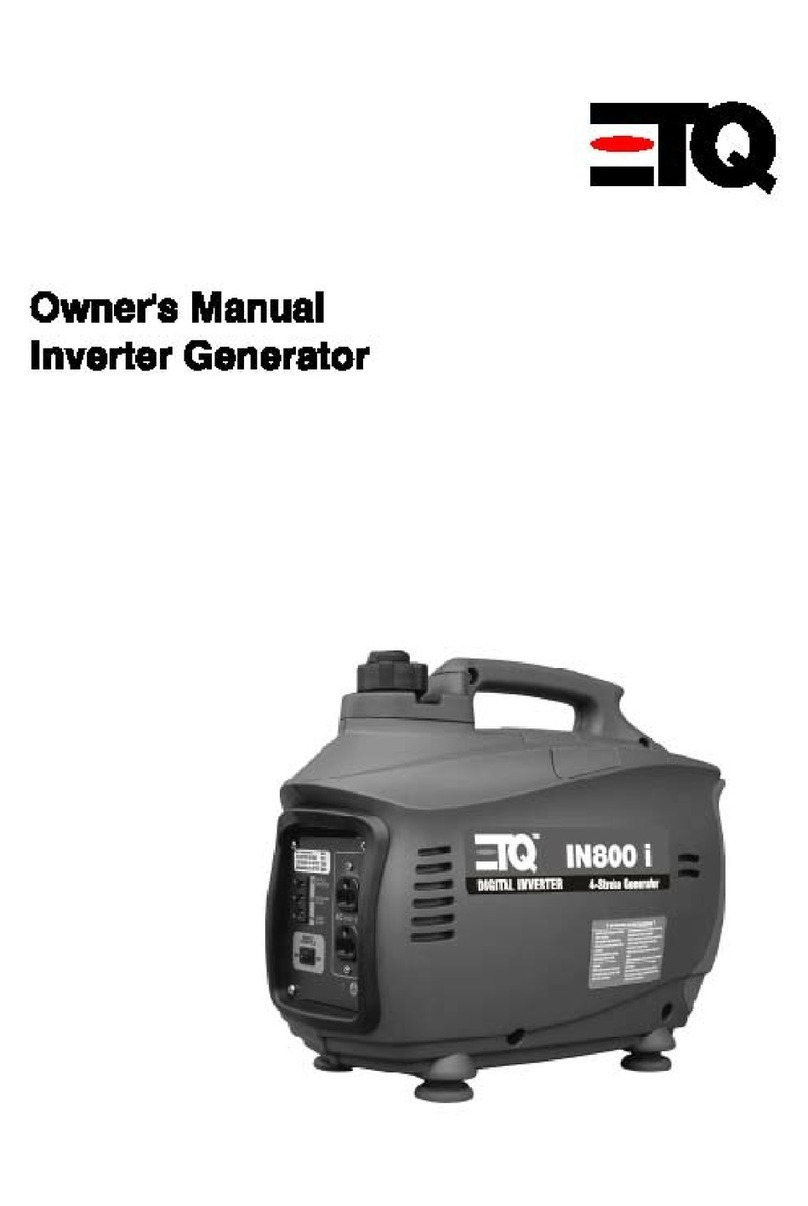
7
it cool at least 2 minutes before
removing the gas cap. Loosen gas cap
slowly to relieve the pressure in the tank.
Fill fuel tank outdoors and never overfill
the tank.
When storing gasoline or equipment
with fuel in tank.
Store away from appliances or
equipment that have a pilot light or other
ignition sources because they can ignite
gasoline vapors.
ENGINE SAFETY PRECAUTIONS
Do not touch hot surfaces. Allow
equipment to fully cool down before
touching.
After the generator has been run, the
engine produces heat. The temperatures
of the muffler and nearby areas can
reach or exceed 1600F. Severe burns
will occur on contact with skin.
Do not modify the generator in any way.
The generator supplies the rated voltage
and rated frequency at its governed
speed.
GENERATOR SAFETY
Never overload your generator as this
can damage your generator or the
electrical devices connected to it.
Do not start generator with electrical
devices connected to it. Start the
generator first and after the speed of the
generator stabilizes, electrical loads can
be applied to it.
When connecting electrical loads, make
sure the devices are “OFF” first before
connecting them. Keep the same
concept when disconnecting electrical
devices, make sure all devices are in the
“OFF” position before disconnecting.
Operate the generator on level surfaces
only. Inclined surfaces reduce the
effective lubrication of the engine.
Do not expose the generator to excessive
moisture, dust, dirt, or corrosive vapors.
PREPARATION BEFORE
OPERATION
Before starting the generator, verify the
following conditions.
GASOLINE
•Add premixed oil and gasoline
and never fill the fuel tank
indoors. Also, be sure to install
the fuel tank cap on tight after
filling. Premix ratio should be
50 parts gasoline and 1 part 2
stroke oil. Use fuel tank cap to
measure oil.




























